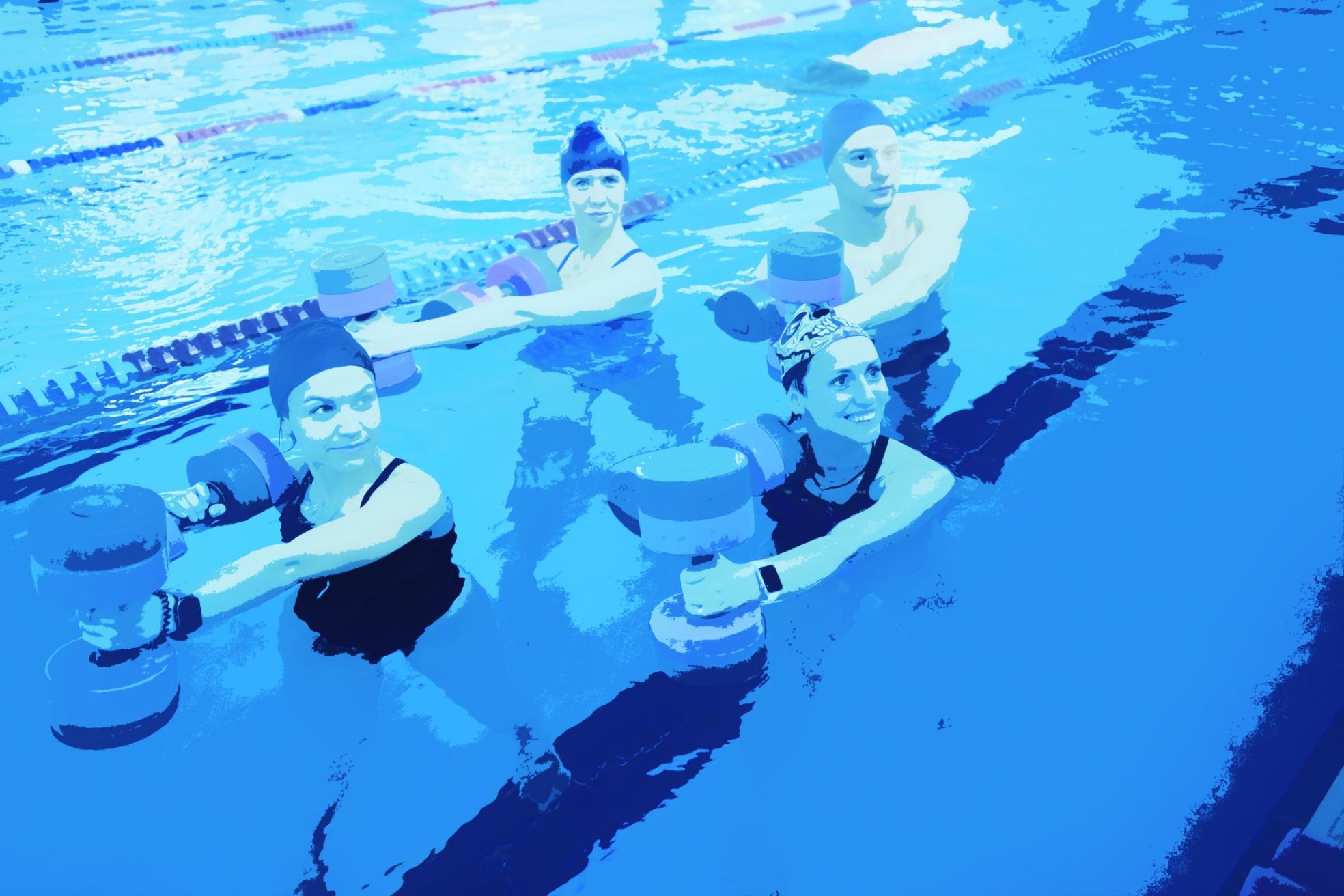When it's too hot for exercise... take to the water
Workout. ·
Even simple exercises done in a swimming pool or the sea can improve strength, flexibility and balance while keeping cool at the same timeMARTA FDEZ. VALLEJO
Friday, 19 August 2022, 12:05
In summer, it is often too hot to go running or cycling and even a walk feels like too much effort in the blazing sun. And as for the gym, who wants to be shut indoors to exercise in hot weather? But luckily, there is another option to help us keep fit: exercising in water.
"Water enables us to exercise in a different way in summer. It motivates us and gets us moving at a time of year when we don't feel like doing very much," says Sara Tabares, who is the sports director of Performa and author of a book called Ellas Entrenan. She says the exercise can be really simple, such as playing in the sea with the kids or moving in time to music; it is still physical activity and therefore good for the health. But, of course, there is also the option of doing more intensive and specific exercise and giving your body a good workout.
Especially recommended for...
Aquatic exercise "is healthy for everyone," says Tabares, but is especially recommended for people with joint pain.
"When we are in water, our body weight is reduced. For example, if the water comes up to our hips, our apparent weight, which is what is supported by our joints, drops by approximately 50 per cent." Exercising in water diminishes the strain and, at the same time, allows free movement.
Back pain
"Water is an ideal medium in which to exercise and it is especially good for people who suffer from back pain. Aquatic exercises benefit that area because they improve strength, balance and flexibility. The water can support as much as 90 per cent of our body," says Almudena López, who is qualified in Physical Activity and Sport and specialises in exercising in water. Another important benefit is that it "improves cardiovascular capacity and balance", she explains.
The ideal depth of water for exercising in a swimming pool is between one and 1.2 metres, says Sara Tabares, "and at that depth we can do slides, jumps, turns, strengthening exercises like squats, kicks, we can lift one leg to the side or to the front, and to strengthen the arms there is another simple movement: opening and closing the arms as if we were pushing the water away".
Exercising in water can also include items such as foam 'noodles', boards, weighted belts, rubber rings, hoops and balls.
"These pieces of equipment are used to increase the intensity of the exercises," says Tabares. For example, holding the board vertically in the water and pushing it forward; or, with foam noodles under the arms, carry out a cycling movement or stretch your legs and open and close them to exercise the abdominal muscles.
"If we wear weighted bands round our wrists and ankles we will be working on more muscule strength and there are also special weights that can be used in the water," says Tabares.
Walking and running
Water has greater density and offers a resistance which is 12 to 14 times higher than exercising on land, which means that walking in the sea or swimming pool is a good way to improve strength, says physiotherapist Jonathan Gastón, of Kinett Advance clinic. And all exercise which is done in water is good for blood circulation, he adds. Walking against the current in the sea or in moderate waves also helps balance.
There is also a cardiovascular exercise called aquatic jogging, and for this the depth of the water is something that needs to be taken into account. Gastón says it should be between the knees and the hips and warns that it is a type of exercise that should only be done occasionally because it is tough.
The other way of running in a swimming pool or in the sea is to use a flotation aid to keep the body suspended, so the arms and legs can move freely while the head remains above the surface of the water. Jonathan Gastón says this exercise is very beneficial because it "gives the back a workout and reduces the impact on the joints".
Warm-up exercises
Sara Tabares warns that everyone needs to do warm-up exercises before getting into the water, even though they might be on holiday and doing something different in the way of sport. It will only take a few minutes and will prevent injury.
"We can do a massage with one of the foam noodles before entering the water, and some low-intensity active mobility exercises to warm up," she says.



